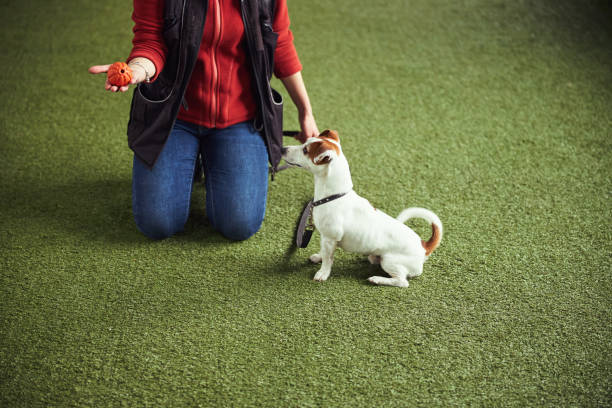In the world of dog training, behavioral modification plays a pivotal role in transforming problematic behaviors into positive outcomes. This aspect of training is not just about teaching new tricks but is fundamentally about changing a dog's response to specific situations and stimuli. For dog trainers and pet parents alike, witnessing these transformations is incredibly rewarding and underscores the effectiveness of thoughtful, consistent training techniques. This blog post delves into a few compelling case studies and success stories from the realm of behavioral modification, showcasing the profound impact of specialized training approaches.
Case Study 1: Overcoming Separation Anxiety

Background: Max, a two-year-old Labrador Retriever, exhibited severe separation anxiety, manifesting in destructive behavior whenever left alone. His owners were at their wits' end, worried about the safety of their home and Max's well-being.
Intervention: A dog trainer specializing in anxiety disorders introduced a gradual conditioning program. This involved:
- Desensitization techniques to help Max become accustomed to being alone for increasing periods.
- The introduction of a "safe space" where Max could feel secure when his owners were away.
- Training sessions included cognitive toys and puzzles to keep Max mentally stimulated when alone.
Outcome: Over several months, Max's anxiety levels decreased significantly. He was able to stay alone for up to four hours without exhibiting destructive behavior, and his owners reported a dramatic improvement in his overall demeanor.
Case Study 2: Addressing Aggressive Behavior

Background: Bella, a rescue German Shepherd, showed aggressive tendencies toward other dogs and strangers, likely stemming from her previous experiences before adoption.
Intervention: The trainer employed a combination of positive reinforcement and controlled exposure to other dogs in a safe environment. Key strategies included:
- Reward-based training to reinforce non-aggressive behaviors.
- Slow introduction to other animals in controlled settings.
- Consistent practice with a focus on building Bella's confidence and trust.
Outcome: Bella's aggression diminished remarkably after a year of steady training. She became able to join group walks and even play sessions at the local dog park, interacting well with both dogs and humans.
Case Study 3: Curbing Excessive Barking

Background: Sammy, a spirited Jack Russell Terrier, had a habit of excessive barking at any stimulus—cars, passersby, and other animals, making it a challenge for his urban-living family.
Intervention: A behaviorist introduced techniques aimed at reducing Sammy's hyper-alertness and teaching him quieter behaviors:
- Implementing a "quiet" command, paired with treats to reinforce silence.
- Distracting Sammy during typical barking triggers with alternative activities.
- Regular training sessions focusing on calmness and relaxation.
Outcome: Sammy learned to respond to the "quiet" command and reduced his barking significantly, much to his family’s and neighbors' relief. His ability to remain calm in previously triggering situations improved greatly.
Success Story: Group Socialization Classes

Background and Intervention: A local dog training center started offering group socialization classes designed to help dogs learn appropriate social behaviors in a structured setting. These classes provided opportunities for dogs with various behavioral issues to interact under close supervision.
Outcome: Many participants in these classes showed remarkable progress in their ability to socialize appropriately. Success stories from these classes highlight the importance of structured social environments in behavioral training, especially for dogs with prior negative social experiences.
These case studies and stories are just a few examples of how effective behavioral modification can be in addressing and correcting challenging behaviors. For dog trainers, these successes reinforce the value of patience, expertise, and individualized training plans. For owners, they offer hope and reassurance that change is possible, leading to happier lives for both them and their canine companions. The journey of behavioral modification is a testament to the transformative power of dedicated training and the profound bond between dogs and humans.
Subscribe to the Gingr Blog






